I'm able to expand and collapse cells but i wanna call functions (expand and collapse) inside UITableViewCell to change button title.
import UIKit
class MyTicketsTableViewController: UITableViewController {
var selectedIndexPath: NSIndexPath?
var extraHeight: CGFloat = 100
override func viewDidLoad() {
super.viewDidLoad()
}
override func didReceiveMemoryWarning() {
super.didReceiveMemoryWarning()
// Dispose of any resources that can be recreated.
}
override func tableView(tableView: UITableView, numberOfRowsInSection section: Int) -> Int {
return 5
}
override func tableView(tableView: UITableView, cellForRowAtIndexPath indexPath: NSIndexPath) -> UITableViewCell {
let cell = tableView.dequeueReusableCellWithIdentifier("cell", forIndexPath: indexPath) as! MyTicketsTableViewCell
return cell
}
override func tableView(tableView: UITableView, heightForRowAtIndexPath indexPath: NSIndexPath) -> CGFloat {
if(selectedIndexPath != nil && indexPath.compare(selectedIndexPath!) == NSComparisonResult.OrderedSame) {
return 230 + extraHeight
}
return 230.0
}
override func tableView(tableView: UITableView, didSelectRowAtIndexPath indexPath: NSIndexPath) {
if(selectedIndexPath == indexPath) {
selectedIndexPath = nil
} else {
selectedIndexPath = indexPath
}
tableView.beginUpdates()
tableView.endUpdates()
}
}
import UIKit
class MyTicketsTableViewCell: UITableViewCell {
@IBOutlet weak var expandButton: ExpandButton!
@IBOutlet weak var detailsHeightConstraint: NSLayoutConstraint!
var defaultHeight: CGFloat!
override func awakeFromNib() {
super.awakeFromNib()
defaultHeight = detailsHeightConstraint.constant
expandButton.button.setTitle("TAP FOR DETAILS", forState: .Normal)
detailsHeightConstraint.constant = 30
}
func expand() {
UIView.animateWithDuration(0.3, delay: 0.0, options: .CurveLinear, animations: {
self.expandButton.arrowImage.transform = CGAffineTransformMakeRotation(CGFloat(M_PI * 0.99))
self.detailsHeightConstraint.constant = self.defaultHeight
self.layoutIfNeeded()
}, completion: { finished in
self.expandButton.button.setTitle("CLOSE", forState: .Normal)
})
}
func collapse() {
UIView.animateWithDuration(0.3, delay: 0.0, options: .CurveLinear, animations: {
self.expandButton.arrowImage.transform = CGAffineTransformMakeRotation(CGFloat(M_PI * 0.0))
self.detailsHeightConstraint.constant = CGFloat(30.0)
self.layoutIfNeeded()
}, completion: { finished in
self.expandButton.button.setTitle("TAP FOR DETAILS", forState: .Normal)
})
}
}
